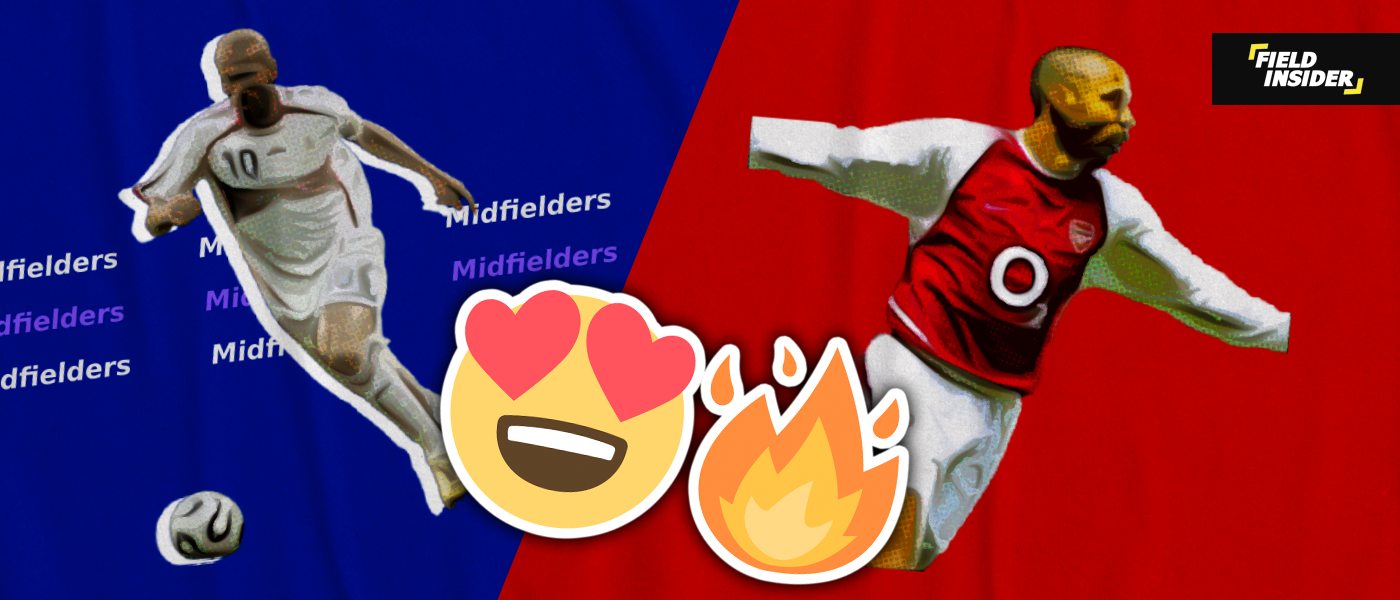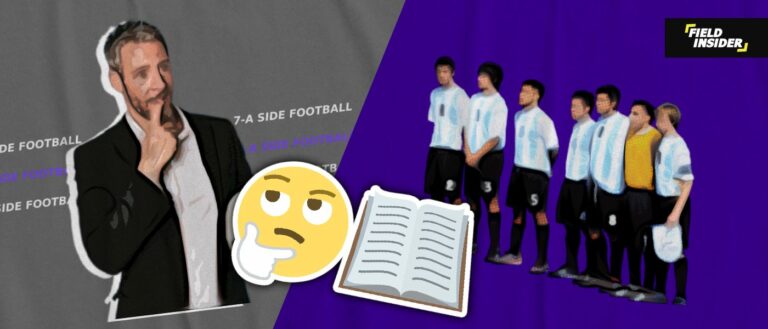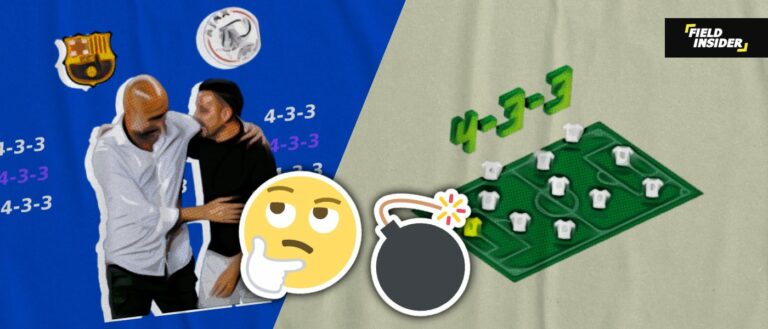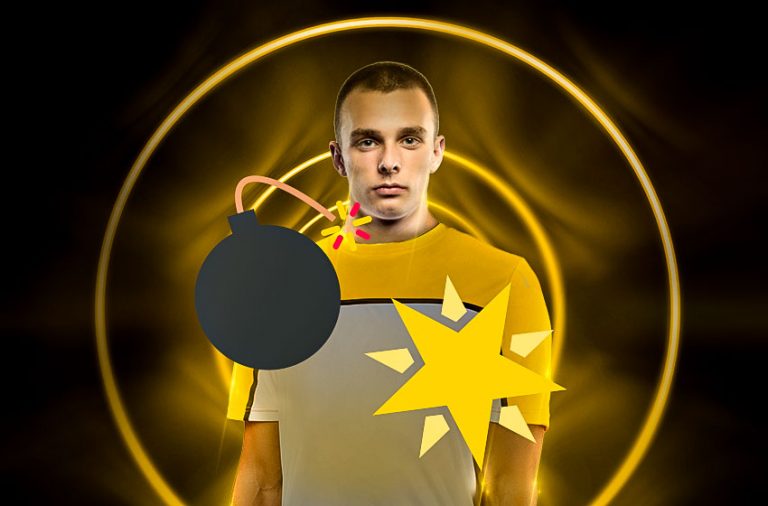Attacking Football Positions: Deep Dive (2023)
In the dynamic world of soccer, attacking football positions are at the heart of the game’s most memorable moments and strategies. This article focuses on dissecting the essence and tactical nuances of attacking football positions, from the precision of strikers to the ingenuity of the false 9s.
This comprehensive analysis delves into the intricacies of these roles, from the spearheading strikers to the innovative false 9s, each contributing uniquely to the art of attack. With the aim to provide detailed insights into the dynamics of each attacking position, we explore the skills, tactics, and impact of these roles in shaping modern soccer.
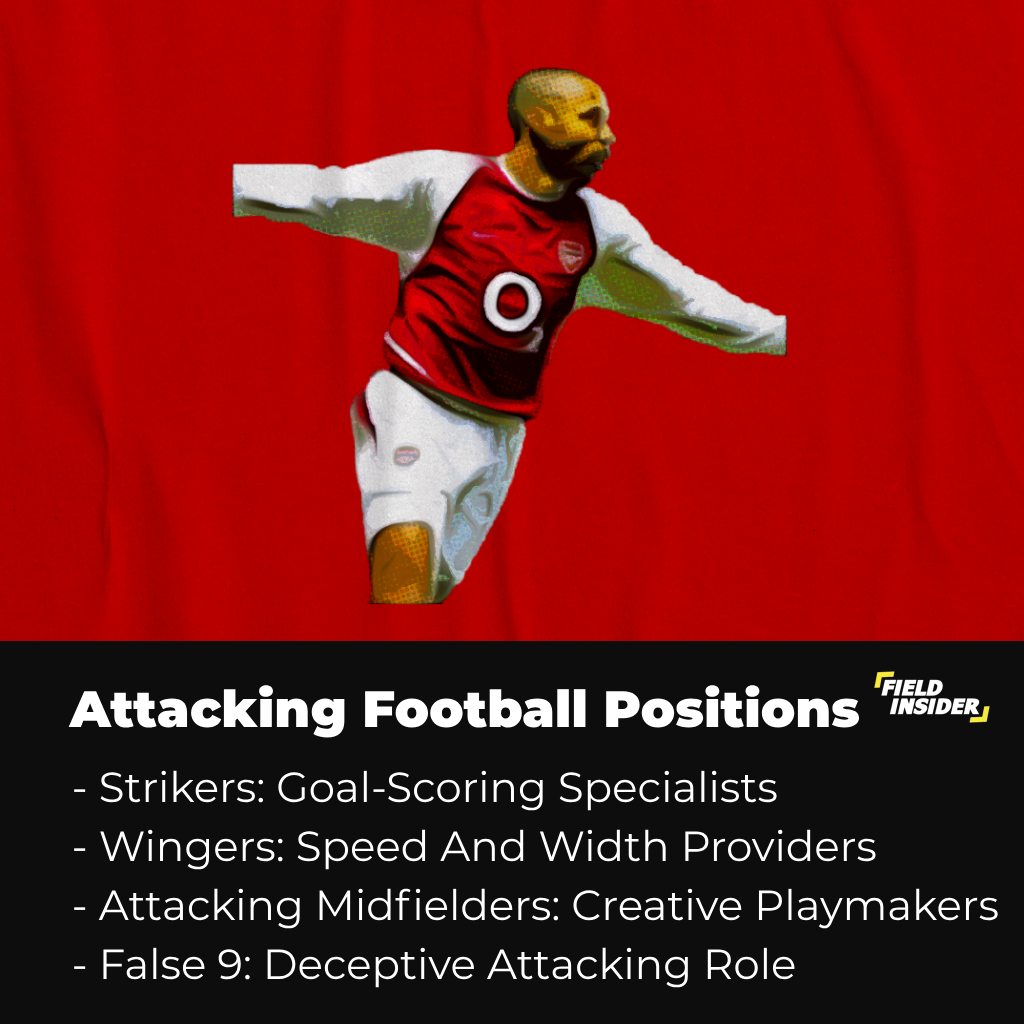
key takeaways
| Position | Key Roles | Essential Attributes | Tactics Employed |
|---|---|---|---|
| Striker | Goal-scoring, leading the attack | Clinical finishing, Spatial awareness | Exploiting spaces, off-ball movement |
| Wingers | Providing width, crossing, cutting in | Speed, Dribbling, Crossing | Varying approach, using the sidelines |
| Attacking Midfielders | Linking midfield and attack | Vision, Passing, Creativity | Orchestrating plays, setting the tempo |
| False 9 | Dropping deep, creating space | Intelligence, Versatility | Movement and space exploitation |
Striker: The Vanguard of Attack
The role of the striker in soccer is pivotal. They are the main goal threat, often the focal point of the team’s offensive efforts. Understanding this attacking football positions is crucial for both players and fans aiming to grasp the nuances of soccer strategy.
Definition and Role on the Field
The striker, also known as the center-forward, is primarily positioned near the opponent’s goal. Their main objective is to score goals and apply pressure on the opposing defense.
Operating closest to the opposition’s goal, they must utilize precision, awareness, and timing to convert chances into goals. This role demands not just skill and athleticism but a psychological edge, often defining the moments that win matches.
Key Skills and Attributes Required
A successful striker possesses a unique blend of attributes. Clinical finishing is non-negotiable; a striker must convert chances under pressure. Spatial awareness allows them to navigate tight defenses and find space where others see none.
Furthermore, physicality helps in shielding the ball and outmuscling defenders, a skill that turns good strikers into great ones. For aspiring strikers, mastering these skills is a journey, one that involves constant learning and adaptation.
Tactics Commonly Employed by Strikers
Strikers are not just about brute force; they require tactical intelligence. They exploit spaces behind defenses, making calculated runs and using their body to fend off challenges.
Their ability to read the game often leads to successful off-ball movements, creating opportunities not just for themselves but for their teammates. Understanding various football formations can enhance a striker’s effectiveness, aligning their personal strengths with the team’s strategic setup.
Wingers: The Flanks of Fury
Wingers are synonymous with pace, skill, and unpredictability in modern soccer. Tasked with providing width and creating scoring opportunities, their role is indispensable to any attacking strategy. Their performances can electrify stadiums and change the course of games within moments.
Role and Responsibilities
The primary duty of a winger is to advance the ball down the flanks and deliver crosses into the box. They must balance between maintaining width to stretch defenses and cutting inside to initiate attacks. This dual threat makes them unpredictable and difficult to defend against.
Effective wingers blend speed with acute tactical awareness, ensuring they are as much a part of the team’s defensive structure as they are of its offensive thrust.
Speed, Dribbling, and Crossing: Essential Attributes
In the arsenal of a winger, speed is the non-negotiable element, enabling them to breeze past defenders and create space. Dribbling skills are equally crucial, allowing them to navigate tight spaces and beat opponents one-on-one.
Lastly, their ability to deliver accurate crosses can turn possession into potential goals. These attributes are foundational to the winger’s role and require continuous refinement.
Tactics for Effective Wing Play
Wingers adapt their tactics based on the team’s formation and the game’s context. They might hug the touchline to provide width or cut inside to support the central attackers.
Understanding different tactical setups, such as those in the 4-3-3 formation, enables wingers to exploit spaces more effectively and align their movements with the team’s overall strategy. This flexibility in approach is what makes a winger truly dangerous.
Attacking Midfielders: The Creative Engine
Attacking midfielders, often seen as the maestros of soccer, orchestrate the play from the heart of the field. Their vision, creativity, and ability to link play make them central to a team’s attacking ambitions. This role demands a blend of tactical intelligence, technical skill, and spatial awareness.
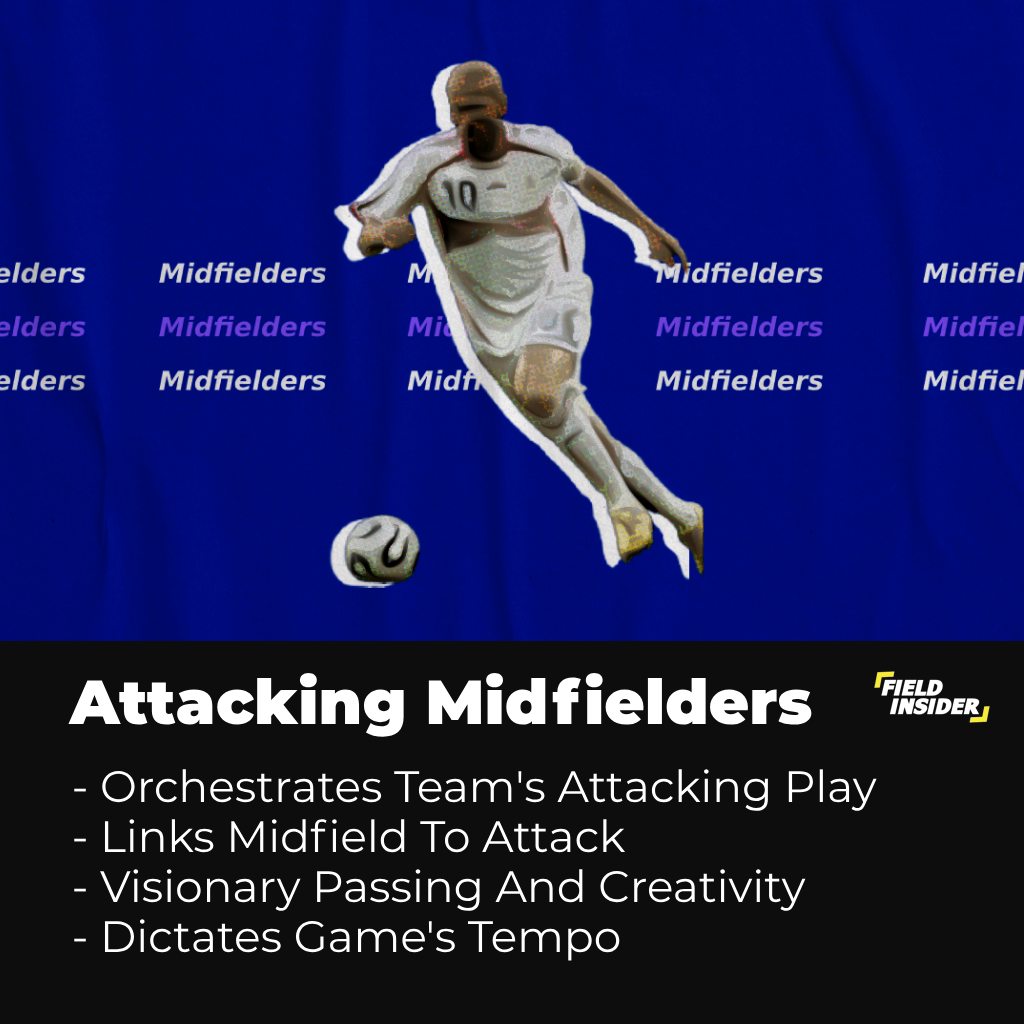
Defining the Role
The attacking midfielder sits between the midfield and forward lines, acting as a conduit for offensive plays. Their role is to dissect defenses with pinpoint passes, maintain possession under pressure, and provide the creative spark for goal-scoring opportunities.
They need to constantly find space and communicate with their teammates to dictate the tempo of the game. This position requires a player who can think one step ahead of their opponents, turning tight situations into advantageous ones.
Vision, Passing, and Creativity: Core Traits
Key to an attacking midfielder’s arsenal are vision, the ability to see runs and passes that others can’t; passing, the precision to deliver the ball exactly where it needs to be; and creativity, the flair to concoct unexpected plays that break through defensive lines.
These traits combine to make a midfielder not just a player, but a playmaker, someone who shapes the game’s narrative with every touch of the ball.
Tactical Approaches for Midfield Dominance
Attacking midfielders adapt their style to the team’s tactical layout and the match’s dynamics. They might drop deeper to collect the ball or push forward to act as a second striker, depending on the situation.
Their understanding of different football formations and tactical schemes is crucial for exploiting gaps in the opposition’s defense and supporting their teammates effectively. This versatility makes them unpredictable and difficult to mark.
False 9: The Tactical Maestro
The False 9 is a nuanced, intellectual role within the tapestry of soccer, defying traditional positional expectations. It embodies fluidity, intelligence, and strategic ambiguity, making it a crucial element in modern attacking schemes.
Explanation of the False 9 Position
The False 9 operates as a chameleon, blurring the lines between striker and midfielder. Unlike a traditional number 9 who anchors the attack from the front, the False 9 drops deeper into the midfield, pulling defenders out of position and creating space for teammates.
This role requires not just technical skills but a profound understanding of spatial dynamics and team strategy. The False 9’s movements are a catalyst for disrupting defensive structures, making it a role for players with high soccer IQ and versatility.
Intelligence and Versatility: Key Qualities
The essence of a False 9 lies in intelligence and versatility. Players in this role must possess the insight to read the game several moves ahead, identifying when to drop back and when to press forward.

Their versatility allows them to transition seamlessly from an attacking threat to a midfield creator, embodying the dual responsibilities of scoring and facilitating. Mastery of this role demands a player who is not only tactically aware but also technically proficient.
Tactics and Strategies Revolving Around the False 9
In the realm of tactics, the False 9 is a master of misdirection and versatility. By vacating the traditional striker’s space, they invite midfielders or wingers to exploit the gaps left in the defense. This role is integral to teams that prioritize possession and fluidity over direct, long-ball tactics.
The use of a False 9 can be particularly effective against teams that employ a rigid defensive line, as it creates uncertainty and forces adaptations. Teams considering this approach should be well-versed in dynamic attacking formations like the 4-6-0 or 4-3-3.
Aggression in Soccer: Defenders vs. Attackers
In the intricate tapestry of soccer, psychological elements like aggression play pivotal roles. This is vividly illustrated in the study titled “Comparative Study of Aggression and Will to Win Between Defenders and Attackers in Soccer.”
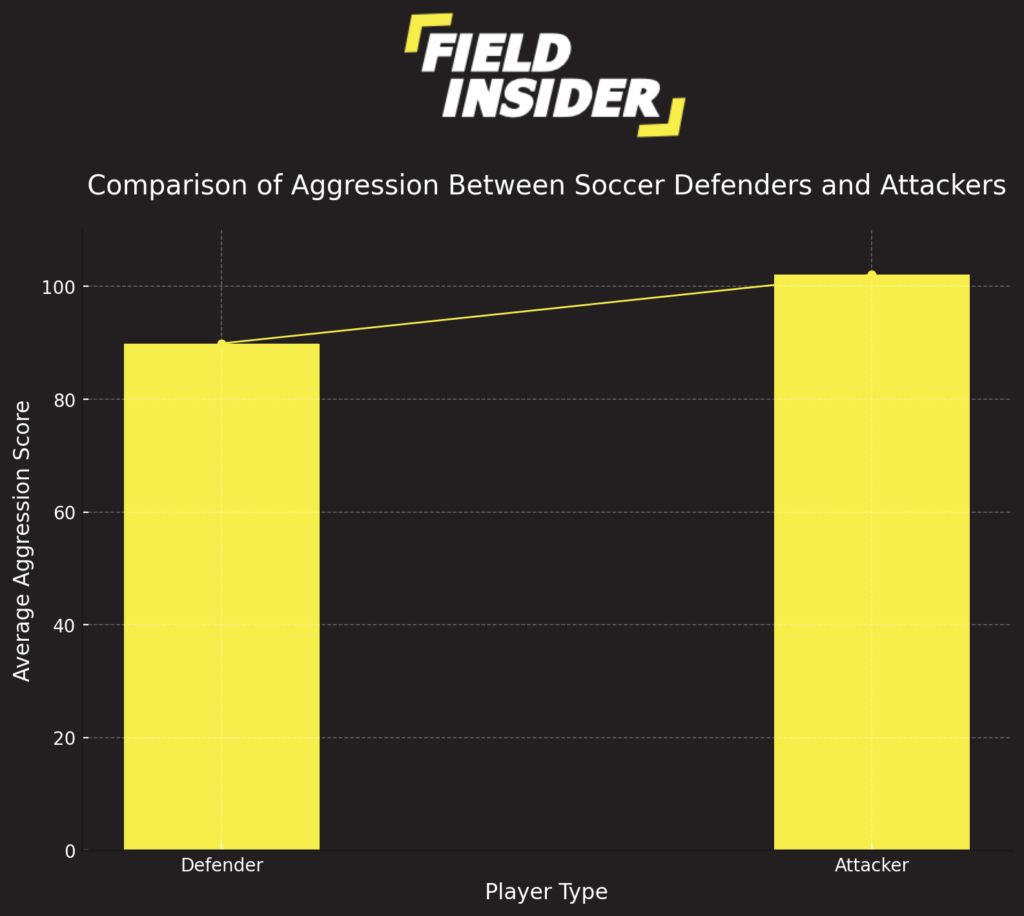
The findings, encapsulated in the chart, reveal a marked difference in aggression levels: attackers average at 102.1, while defenders show a lower average of 89.9. This stark contrast highlights the distinct mental approaches required by different positions and also underscores the psychological intensity attackers bring to the game.
The higher aggression score for the players in attacking football positions could indicate a more pronounced drive to break through opposing defenses, whereas defenders may channel aggression differently, focusing more on containment and tactical positioning.
Conclusion
The diversity of attacking positions in soccer underlines the complexity and beauty of the game. From the direct threat of the striker to the deceptive maneuvers of the false 9, each role contributes uniquely to the team’s offensive playbook.
This analysis invites enthusiasts and aspiring tacticians to explore further the multifaceted world of soccer strategies, fostering a deeper appreciation of the game’s attacking football positions.. Explore more about attacking football positions to enhance your understanding of the game’s ever-evolving tactics.
Among these positions, do you think we have missed out on any? Let us know! Before we conclude today’s sitting, make sure you have visited our soccer section for more amazing pieces like this one!


